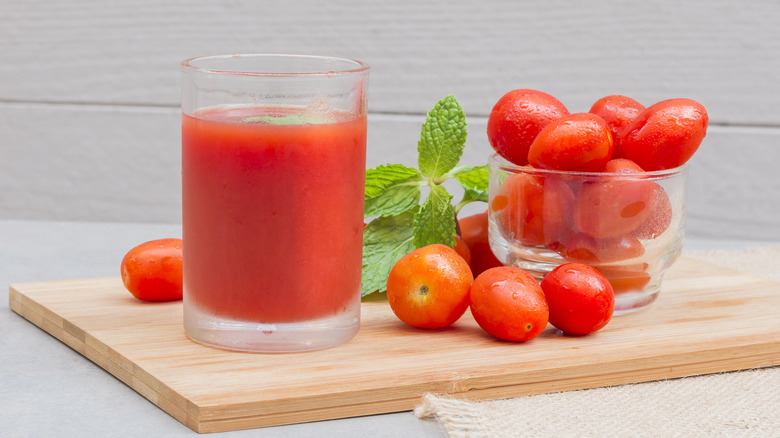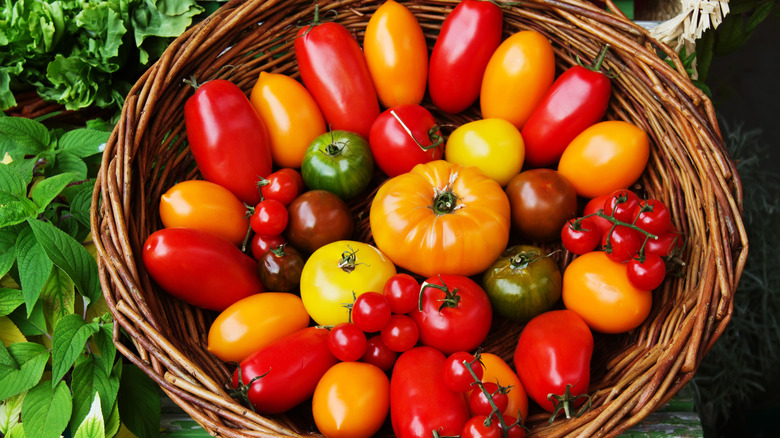Why Plum Tomatoes Are The Best Bet For Making Juice
The number 10,000 gets tossed about in tomato-talk circles, but it's not referring to typical crop yields, average per-capita tomato consumption, or any other produce statistic. Believe it or not, that's the incredibly huge number of individual tomato varieties populating millions of farm acres and backyard gardens across the globe. Memorizing the colorfully cutesy names of each varietal would be near impossible –– but fortunately, you don't have to.
Ardent produce purveyors spend plenty of time archiving and educating on which tomato types work best for slicing, dicing, crushing, saucing, or gloriously eating them fresh from the vine. But when it comes to juicing, the specific tomato you choose matters in a big way. Since they'll be consumed directly in juice form, rather than added to pasta sauce or other tomato-based dishes, the taste and texture of juice-bound tomatoes must stand on their own merits. After all, tomato juice will be sliding down your throat in its natural and pure, unadulterated form.
For the most flavorful tomato juice with just the right texture, you can mostly bypass thousands of varieties that don't identify as plum tomatoes. That's because the plum family, a clan with small, long, oval, or plum-like shapes, harbors just the right amount of sweetness while retaining a dense, pulpy flesh that keeps the juice from separating. Unlike many other tomatoes, they have just two seed compartments, meaning fewer seeds to swim in your glass or play havoc on your teeth.
Mix plum and beeksteak tomatoes for juicing
It's easy to think of a plum tomato as a single entity, but there are actually many varieties of plum tomatoes. One of the better-known plums is the Roma, which reportedly came into being in the state of Maryland, under the auspices of the USDA. However, the Roma is a descendant of arguably the second-most famous plum tomato, the Italian-bred San Marzano. Both are excellent choices for juicing, as are extended plum family members Big Mama, Amish Paste, and more reclusive cousins such as the Speckled Roman, Lucky Tiger, Jersey Devil, and Banana Legs. For those, you'll likely have to order from specialty growers or buy the seeds for your tomato-growing party.
Plums may be the tomato juice standard, but they do have competition. Large, extra-juicy varieties such as Beefsteak and Big Beef provide plenty of liquid, while other big-juicers can inject deeper nuances. For example, heirloom varieties such as Cherokee Purple add an earthy element with hints of smokiness, while the concentrated sugar in medium-sized Early Girls will sweeten and splash your juice with brilliant red hues.
The real sweet spot for the perfect pitcher of tomato juice may just come from mixing and matching. Try combining small, meaty plum tomatoes with large, juicy Beefsteaks, thereby pulling the best features from each. Then experiment with adding small amounts of smoky, citrusy, earthy, super-sweet, bold, mild, or multi-colored tomatoes to create your own signature homemade tomato juice.

